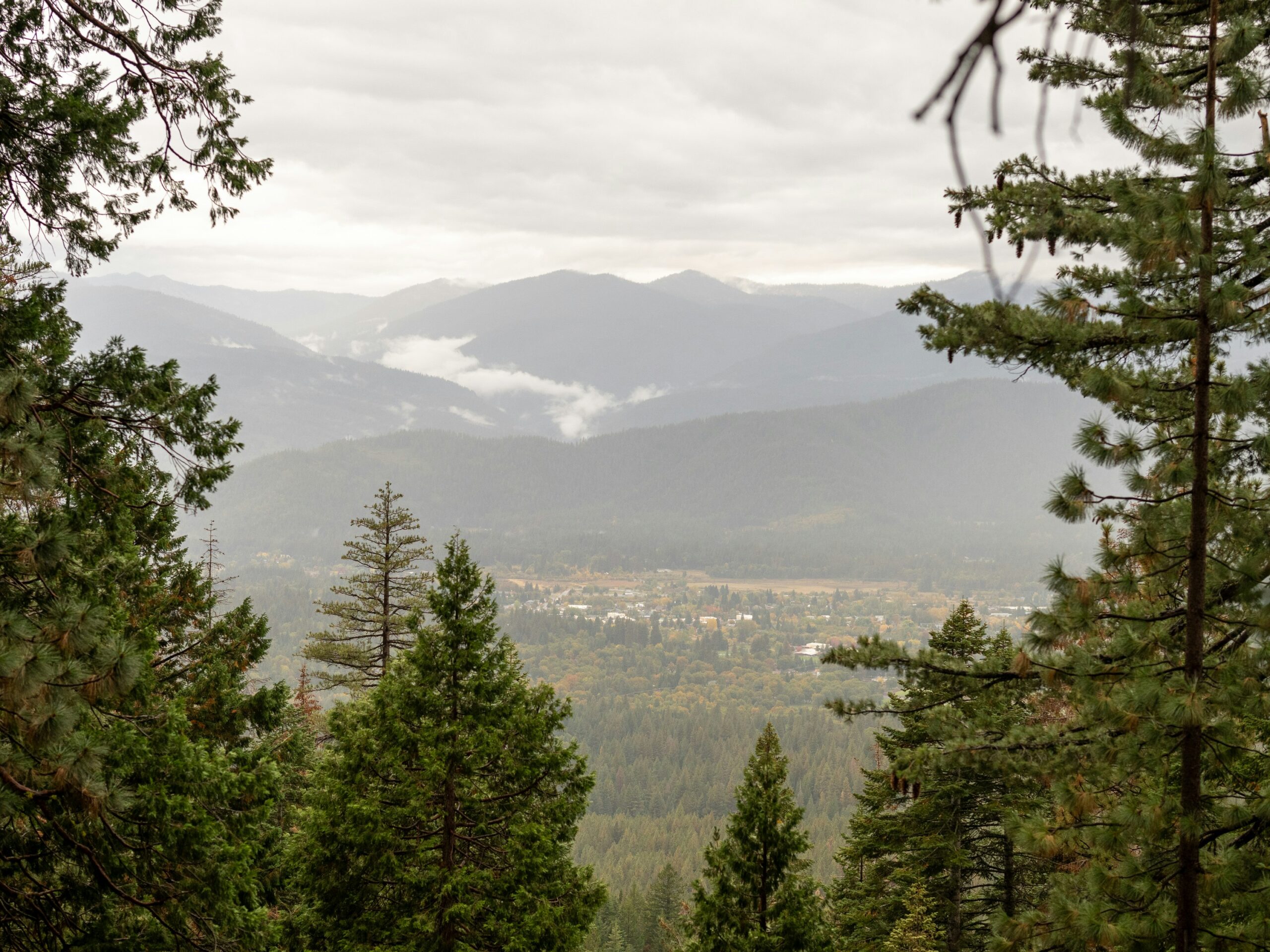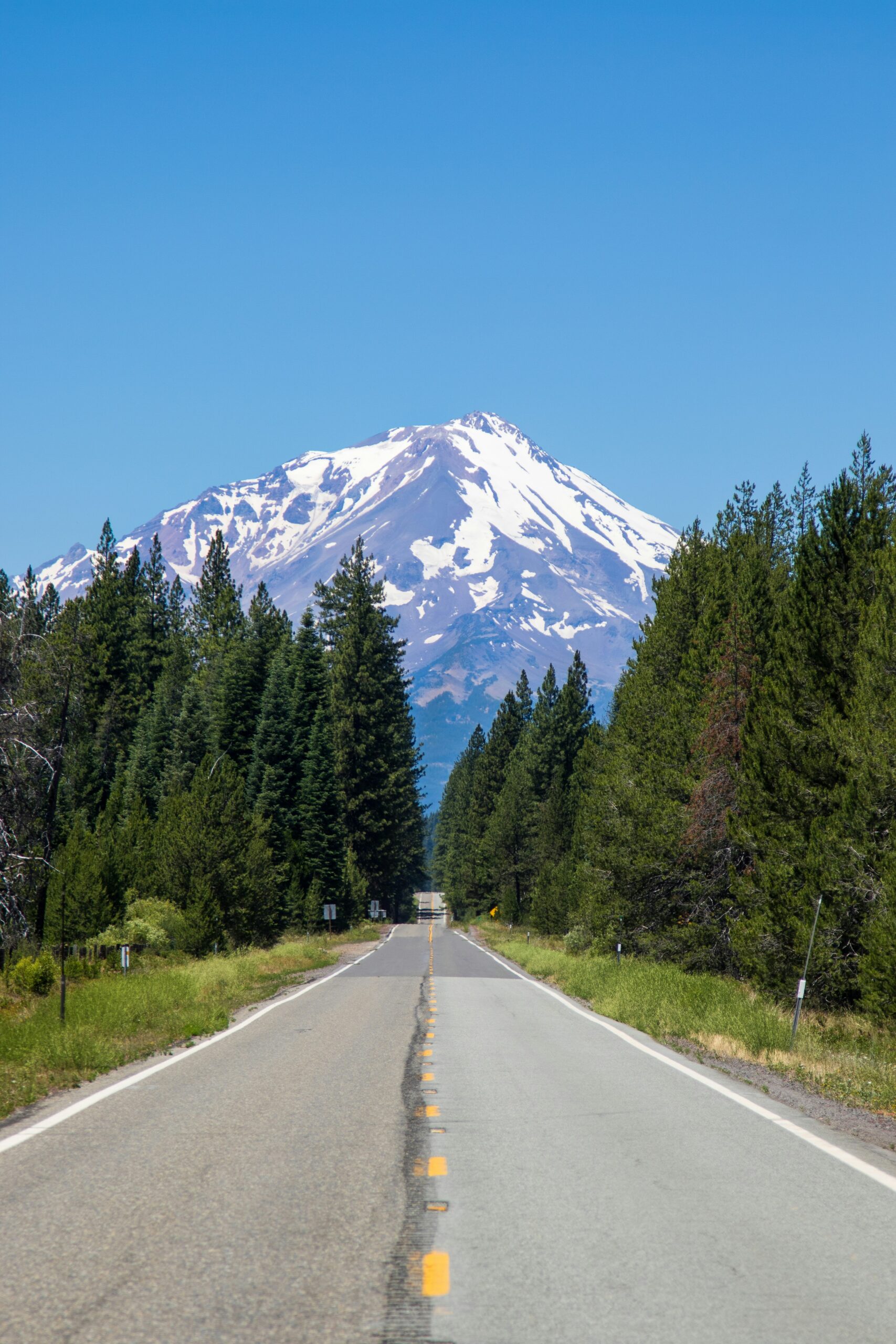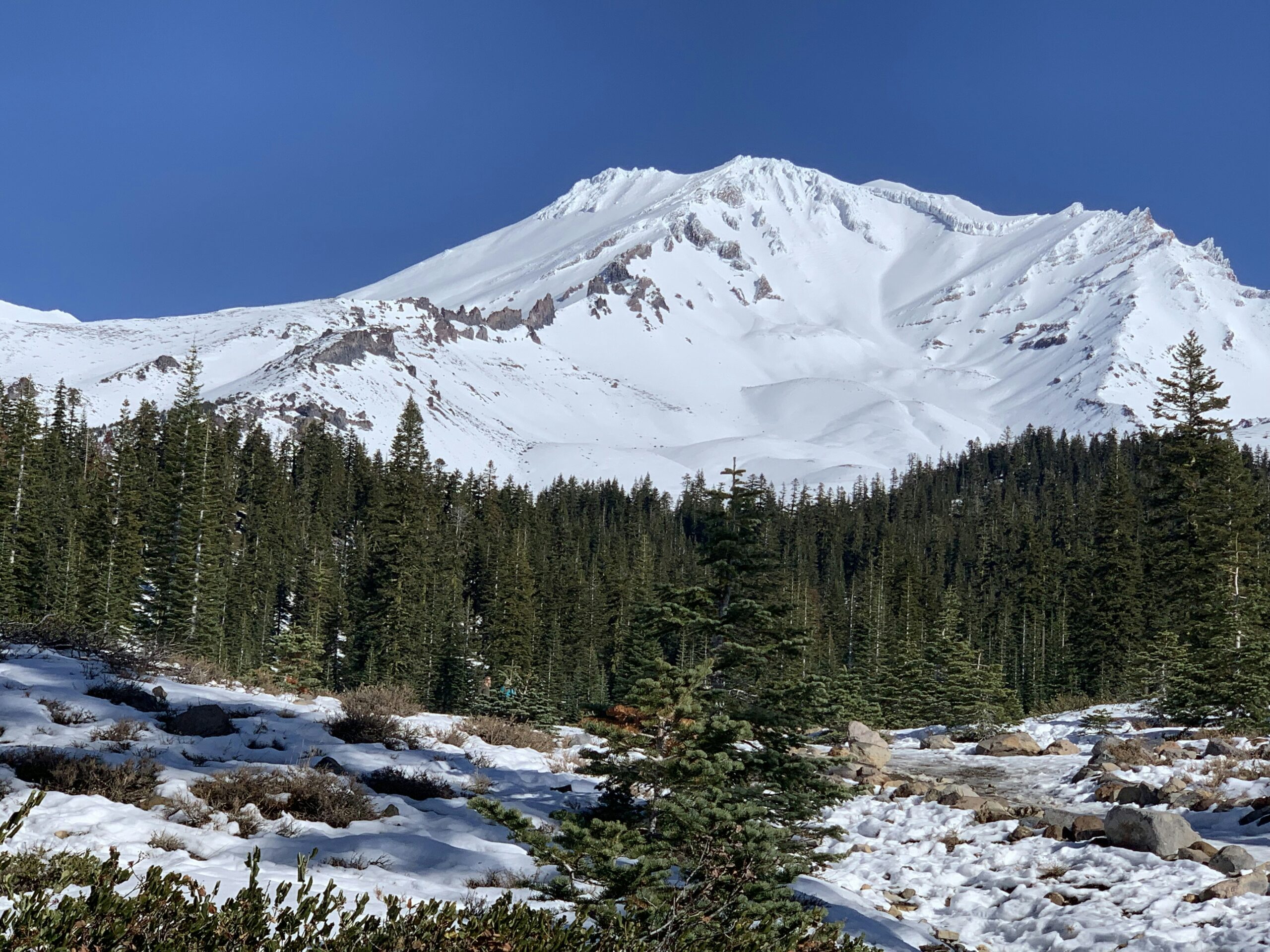Mount Shasta, a towering behemoth of nature, has always beckoned adventurers to its slopes. However, the allure of solo climbing this majestic peak comes with its fair share of risks. Scaling Mount Shasta alone requires a fearless spirit, unwavering determination, and extensive mountaineering skills. From unpredictable weather conditions to treacherous terrain, this article explores the potential dangers that solo climbers might encounter on their journey to conquer the summit. So, before you embark on your solo expedition up Mount Shasta, it's crucial to understand the risks you may face and equip yourself with the necessary knowledge and precautions to ensure a safe and successful climb.

Understanding Mount Shasta
Geographical position of Mount Shasta
Mount Shasta, a majestic volcano located in Northern California, commands attention with its impressive height of 14,179 feet. Situated in the Siskiyou County, the mountain stands tall in the southern part of the Cascade Range, an area known for its stunning natural beauty and diverse wildlife. Its strategic position at the crossroads of several ecological regions adds to its allure and popularity among hikers and climbers.
Local climate and conditions
Mount Shasta experiences a wide range of weather conditions throughout the year. The climate can be classified as Mediterranean, characterized by hot, dry summers and cool, wet winters. However, due to the mountain's elevation, the weather can be highly unpredictable, even during the summer months when climbers are more likely to attempt their ascent. It is crucial for climbers to remain alert and prepared for rapid weather changes, which can significantly impact their safety and the success of their climb.
Overview of Mount Shasta's topography
Mount Shasta boasts a diverse topography, offering challenges and opportunities to climbers of varying skill levels. The lower slopes are mainly covered with forests, with pine, fir, and cedar trees enveloping the landscape. As climbers ascend, they will encounter rocky and unstable surfaces, presenting obstacles that require careful navigation and attention. The upper reaches of the mountain are dominated by glaciers, crevasses, and snowfields, which can add an element of danger and require specialized equipment to safely traverse.
Challenges of Mount Shasta's Terrain
Rocky and unstable surfaces
One of the primary challenges climbers face on Mount Shasta is navigating rocky and unstable surfaces. The loose scree, loose rocks, and uneven terrain demand constant vigilance to find stable footing and avoid potential falls or injuries. Climbers must be prepared to encounter challenging terrain and equip themselves with appropriate footwear and equipment to maximize their safety.
Potential for avalanches
Mount Shasta's steep slopes and abundant snowfall make it susceptible to avalanches. Climbers must be aware of this risk, especially during the winter and early spring months when snowpack is at its peak. Understanding snow conditions, carrying avalanche safety gear, and receiving proper training in avalanche awareness and rescue techniques are crucial for mitigating the dangers posed by these potentially deadly natural phenomena.
Accidents due to falling rocks and debris
The rugged nature of Mount Shasta's terrain also increases the likelihood of falling rocks and debris. As climbers ascend, they may dislodge loose rocks or encounter falling debris from above. This poses a significant risk to climbers, as injuries caused by falling rocks can be severe or even fatal. Climbers must exercise caution, wear appropriate helmets, and choose their routes carefully to minimize the chances of accidents caused by falling debris.
Danger of crevasses and ice falls
The presence of glaciers and snowfields on Mount Shasta means climbers must be vigilant about the danger of crevasses and ice falls. Crevasses, deep cracks in the ice, can be hidden beneath a seemingly stable surface and pose a serious threat to anyone who falls into them. Ice falls, sudden collapses of ice formations, can occur unpredictably, making it crucial for climbers to carefully assess the stability of the surrounding ice and take necessary precautions to avoid such dangers.
Weather Related Risks
Unexpected weather changes
Mount Shasta's elevation and geographical location make it susceptible to sudden and drastic weather changes. Even during the summer months, climbers may encounter unexpected storms, with rapidly dropping temperatures, strong winds, and heavy precipitation. Such weather changes can disorient climbers, hinder progress, and increase the risk of accidents. Climbers must closely monitor weather forecasts and be prepared to adapt their plans accordingly to minimize exposure to these potentially hazardous conditions.
Risk of hypothermia and frostbite
The cooler climate on Mount Shasta, particularly at higher elevations, poses a risk of hypothermia and frostbite for climbers. Hypothermia occurs when the body loses heat faster than it can produce, while frostbite results from the freezing of body tissues due to prolonged exposure to cold temperatures. To prevent these conditions, climbers must dress in layers, ensuring they are adequately insulated, and use appropriate gear such as gloves, hats, and face masks to protect exposed skin from the biting cold.
Danger of snowstorms and whiteouts
Snowstorms and whiteouts are common occurrences on Mount Shasta, significantly reducing visibility and increasing the risk of disorientation. A whiteout can make it challenging to differentiate between the ground and the sky, leading to confusion and potential falls. Climbers should always carry navigation tools, such as compasses and maps, to aid in finding their way in low visibility conditions, and be prepared to hunker down and wait out the storm if necessary.
The impact of high winds
Due to its elevated position and exposure to strong winds, Mount Shasta can experience gusty conditions, particularly on exposed slopes and ridges. High winds can significantly impact a climber's stability and increase the risk of being blown off balance or knocked over. Climbers must be prepared with wind-resistant clothing and gear, take caution in exposed areas, and be aware of their surroundings to avoid potential accidents caused by strong winds.
Risk of Altitude Sickness
Signs and symptoms of altitude sickness
Altitude sickness, also known as acute mountain sickness (AMS), can affect climbers as they ascend to higher elevation. The initial symptoms of AMS include headache, nausea, dizziness, fatigue, and shortness of breath. Recognizing and promptly responding to these signs is crucial, as failure to address altitude sickness can lead to life-threatening conditions.
Dangers of Acute Mountain Sickness (AMS)
AMS, if left untreated, can progress to more severe forms, such as high-altitude cerebral edema (HACE) and high-altitude pulmonary edema (HAPE). HACE is characterized by the swelling of the brain potentially leading to loss of consciousness, confusion, and impaired judgment. HAPE, on the other hand, involves the accumulation of fluid in the lungs, leading to severe breathing difficulties. Climbers must be aware of the risks associated with AMS and seek immediate medical attention if symptoms worsen or persist.
Risk of High-Altitude Cerebral Edema (HACE)
High-altitude cerebral edema (HACE) is a potentially life-threatening condition that can develop at high elevations. HACE occurs when the brain swells due to the effects of hypoxia, or lack of oxygen, and can lead to neurologic impairment, confusion, loss of coordination, and even coma. It is crucial for climbers to acclimatize properly and descend if symptoms of HACE are present to avoid serious health consequences.
Risk of High-Altitude Pulmonary Edema (HAPE)
High-altitude pulmonary edema (HAPE) is a condition where fluid accumulates in the lungs, leading to severe breathing difficulties. HAPE can strike quickly and without warning, making it crucial for climbers to monitor their symptoms closely. Symptoms may include extreme fatigue, persistent cough, breathlessness at rest, and a bluish tinge to the skin. Recognizing these symptoms promptly and descending to lower elevations is essential to prevent further complications and ensure climbers' safety.

Fragmented Communication
Issues with cellphone reception
Climbers should be aware that cell phone reception on Mount Shasta can be spotty or nonexistent, particularly in remote areas and at higher elevations. This lack of reliable communication can pose challenges in emergencies or when seeking assistance. It is wise to have alternate means of communication, such as satellite phones, radios, or personal locator beacons, to ensure reliable communication and increased chances of rescue in case of an emergency.
Difficulties with GPS reliability
While GPS technology has revolutionized outdoor navigation, climbers on Mount Shasta should be cautious of relying solely on GPS devices. The mountain's rugged terrain and limited satellite coverage may result in inaccurate or inconsistent GPS readings. Climbers should always carry physical maps and compasses and be proficient in their use, as well as have a backup plan in case GPS devices fail or are unreliable.
Challenges in communicating with search and rescue teams if lost
In the event of getting lost or encountering an emergency, communication with search and rescue teams on Mount Shasta can be challenging. Remote areas and unpredictable weather conditions may delay response times or hinder rescue efforts. Climbers should be self-reliant and prepared with the necessary skills, knowledge, and gear to wait for assistance if needed, while also ensuring loved ones or emergency contacts are aware of their itinerary and potential delays.
Physical and Mental Strains
Physical fatigue risks
The physical demands of climbing Mount Shasta, particularly for solo climbers, should not be underestimated. Long hours of hiking, carrying heavy packs, navigating challenging terrain, and battling harsh weather conditions can lead to physical exhaustion and fatigue. It is crucial for climbers to train and prepare their bodies for the strenuous activity, take regular breaks to rest and refuel, and listen to their bodies to avoid pushing beyond their limits.
Mental stress and anxiety
Solo climbing on Mount Shasta can come with significant mental stress and anxiety. The isolation, the uncertainties of the mountain environment, and the responsibility for one's own safety can weigh heavily on climbers' minds. Coping strategies, such as mindfulness techniques, maintaining a positive mindset, and ensuring adequate rest and sleep, can help solo climbers manage the mental strain and make well-informed decisions throughout their ascent.
Potential for injuries due to physical exhaustion
Physical exhaustion can increase the risk of injuries on Mount Shasta. Fatigue can impair judgment, decrease coordination, and slow reaction times, making climbers more vulnerable to accidents and falls. To mitigate this risk, climbers should pace themselves, take regular breaks, stay hydrated and nourished, and listen to their bodies' signals of overexertion. Proper rest and recovery are essential for avoiding unnecessary injuries and ensuring a safe climb.

Issues with Supplies and Equipment
Risk of running out of food and water
Solo climbers on Mount Shasta must carefully plan and manage their supplies to avoid the risk of running out of food and water during their ascent. As the climb can take multiple days, it is crucial to pack sufficient rationed meals and hydrating fluids to sustain energy levels and prevent dehydration. Adequate research and preparation can ensure climbers have enough supplies, and they should be ready to adjust plans or ration carefully if unexpected delays occur.
Unforeseen equipment failure
Equipment failure is a constant risk for solo climbers due to the extended duration of the climb and the harsh mountain environment. Essential gear, such as tents, sleeping bags, and stoves, can break or malfunction, leaving climbers exposed to the elements or unable to cook meals. Regular gear checks, carrying backup equipment, and acquiring basic repair skills are vital for mitigating the consequences of unforeseen equipment failures and maintaining safety during the climb.
Difficulty in carrying all necessary equipment by yourself
Solo climbers often face the challenge of carrying all necessary equipment and supplies without the support of a team. This includes camping gear, mountaineering gear, food, water, and additional safety equipment. The weight of these items can be physically demanding, particularly when combined with the effort required for ascending steep slopes. Careful selection of lightweight and compact equipment, along with thorough physical training, is crucial for managing these challenges and ensuring safety and comfort throughout the climb.
Risk of Getting Lost
Navigational challenges on Mount Shasta
Finding the correct route can be a significant challenge for climbers on Mount Shasta. With a lack of marked trails, climbers must rely on topographic maps, compasses, and their own navigational skills to navigate the mountain correctly. Detailed research, familiarity with the routes, and the ability to interpret the natural features of the landscape are essential for minimizing the risk of getting lost.
Lack of marked trails
Unlike many other popular climbing destinations, Mount Shasta lacks marked trails. This further adds to the navigational challenges climbers face and increases the risk of veering off course. Mountaineers attempting the climb solo should be prepared to rely on their own navigational abilities or consider seeking guidance from experienced climbers or professional guides to ensure they stay on the safest and most efficient paths.
Difficulty in finding the way back in case of unexpected weather changes
Sudden weather changes, such as snowstorms or whiteouts, can disorient climbers on Mount Shasta and make it difficult to retrace their steps. Low visibility and covered tracks may hinder the ability to find the right way back, putting climbers at risk of venturing further into dangerous terrain unintentionally. It is essential for climbers to have a robust understanding of their surroundings, carry navigational tools, and know how to interpret natural landmarks to reduce the chances of becoming disoriented and getting lost.
Lack of Immediate Assistance
Delay in response to emergencies
Mount Shasta's remote and rugged location can result in a delay in emergency response times. Due to the challenges search and rescue teams face in accessing the mountain's difficult terrain, it may take several hours or even days for help to arrive in case of an emergency. Solo climbers must be prepared to handle emergencies on their own for an extended period and have the necessary skills and supplies to ensure their safety and survival until assistance arrives.
Difficulty in immediate evacuation
In cases where evacuation becomes necessary, the logistics involved in safely removing a solo climber from Mount Shasta can be complex and time-consuming. Helicopter rescues may be hindered by adverse weather conditions or limited landing zones, further delaying timely evacuation. Climbers should have contingency plans in place, such as signaling devices or emergency shelter, to ensure they can wait for evacuation assistance comfortably and safely until help arrives.
Risk of worsening injuries/conditions due to delay in rescue
The extended response times and challenges associated with evacuating climbers from Mount Shasta increase the risk of injuries or medical conditions worsening prior to rescue. A delay in receiving appropriate medical attention can have severe consequences for solo climbers. It is essential for climbers to prioritize self-care, including proper first aid, medication management, and understanding potential complications, to minimize the risk of their condition deteriorating during a rescue operation.
Preventive Measures for Solo Climbers
Importance of thorough preparation and planning
Thorough preparation and planning are vital for the safety of solo climbers on Mount Shasta. This includes researching the terrain, understanding potential risks and challenges, creating a detailed itinerary, and informing trusted contacts of the climbing plans. Climbers must also ensure they have the necessary permits and licenses, familiarize themselves with emergency protocols, and pack appropriate supplies for their journey.
Necessity of adequate training and fitness
To safely take on the challenges of Mount Shasta, solo climbers must prioritize adequate training and physical fitness. This includes cardio and strength training, as well as specific mountaineering skills such as glacier travel, navigation, and self-rescue techniques. Climbers should consider enrolling in mountaineering courses or seeking mentorship from experienced climbers to acquire the necessary skills and knowledge for a successful and safe climb.
Relevance of checking weather forecasts
Given the unpredictable nature of weather on Mount Shasta, solo climbers must be diligent in checking weather forecasts before and during their ascent. Online resources, local park services, and mountaineering organizations can provide up-to-date weather information specific to the mountain. By staying informed about weather patterns and anticipated changes, climbers can make informed decisions regarding their climb and adjust their plans accordingly to optimize safety.
Need for reliable communication equipment
Reliable communication equipment is essential for solo climbers on Mount Shasta to stay connected and seek assistance in case of an emergency. Satellite phones, radios, or personal locator beacons (PLBs) provide options for communication that overcome the communication limitations caused by the mountainous terrain. Climbers should ensure their communication devices are fully charged, protected from the elements, and kept easily accessible throughout the climb.
Importance of having emergency contingency plans
Solo climbers must always have emergency contingency plans in place to respond effectively to unexpected scenarios. These plans should include protocols for inclement weather, navigational challenges, injuries, and emergencies. By thinking through potential risks and developing clear and practical contingency strategies, climbers can react swiftly and confidently in stressful situations, minimizing risks and increasing their chances of a safe and successful climb on Mount Shasta.
In conclusion, solo climbing on Mount Shasta presents a range of challenges and risks that climbers must be well prepared for. The mountain's unique geographical position, variable weather conditions, complex terrain, and the potential for altitude sickness all require careful planning, physical and mental preparation, and understanding of potential hazards. By thoroughly assessing the risks, taking preventive measures, and equipping themselves with the necessary skills and resources, solo climbers can navigate the risks and ensure a safe and rewarding experience on Mount Shasta.
